Sex in Movies: narrative interruptus
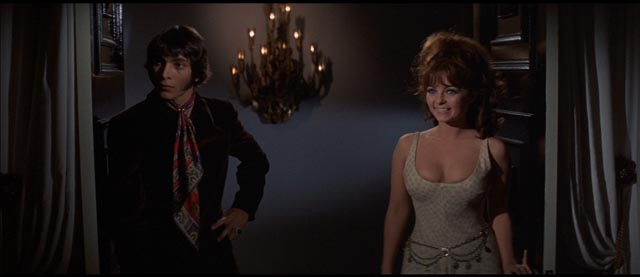
Sex has been a staple of movies since the medium was invented, a main inspiration for society’s need to impose censorial limitations throughout the century-plus we’ve been watching shadows projected on a screen. Questions of what is acceptable have shifted and changed over the years – in the Hollywood mainstream, there was a frankness in the silent and early sound periods which looks surprising to us today, because the advent of the Production Code in the early ’30s suppressed the open treatment of adult relationships. The movies were forced to pretend that sex wasn’t really a part of life, while surreptitiously continuing to send signals to the audience through suggestive indirection (screwball comedies were steeped in these kinds of coded messages; in fact it was the chief reason for the genre’s existence).
While sex was more openly exploited on the fringes of the business, there was a fairly clear separation between “real movies” and “pornography” up until the loosening of the code in the ’60s. That was when issues of sexuality began to resurface explicitly in the mainstream – that is, sexuality as a theme (The Graduate, Midnight Cowboy, etc), although the actual depiction remained discreet. Then the sexual revolution of the late ’60s began to make outright pornography socially acceptable, at least among some segments of society; Deep Throat became an above-ground hit, and hardcore was watched by couples on a date and reviewed in mainstream media.
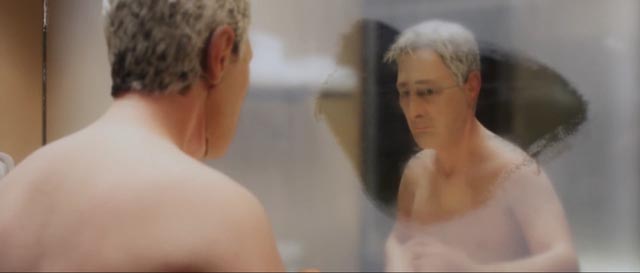
That phase lasted only so long – the actual nature of the porn business turned out to be too dark and sordid for respectable people to ignore, and hardcore retreated again, still hugely profitable but less acceptable for the socially enlightened audience. But it left its traces in the mainstream, and the incorporation of explicitly sexual material into otherwise respectable movies became fairly common. You could see actors of stature – Dirk Bogarde and Charlotte Rampling in The Night Porter, Julie Christie and Donald Sutherland in Don’t Look Now – engaged in scenes far more explicit than the relatively chaste hugs and kisses of the old Hollywood stars. These scenes had more in common with the intermediary “soft core” stream of exploitation than classical narrative. And audiences could tell themselves that watching these naked stars grappling with each other was respectable because the context was serious and non-exploitational.
But really, in the end, we were still watching naked bodies at work whatever the context – it’s very hard to sustain a sense of distance and view such scenes as expressions of character, rather than as the actors themselves engaged in sexual play. It takes a remarkable director to sustain the integrity of the narrative space in such circumstances. Or a director for whom the physicality of sex constitutes the narrative space – someone like Lars von Trier in Antichrist and Nymphomaniac, films in which all action and every dimension of character arises from the sexual impulse. Not long ago, von Trier’s recent films would have been considered pornography or at best high-toned exploitation, but his application of cinematic style and thematic depth has, at least in some circles, given the depiction of explicit sexual activity a new respectability; watching a von Trier film doesn’t require the excuses once needed to walk into a theatre showing Deep Throat. Back then, this was an act in defiance of mainstream morality; von Trier’s work has gone some way towards mainstreaming pornographic imagery.
All of which is a windy preamble to a couple of movies I’ve recently watched which touch on the fraught place of sex in popular movie culture.
*
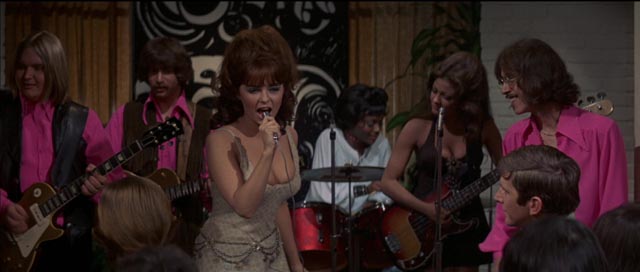
Beyond the Valley of the Dolls (Russ Meyer, 1970)
Russ Meyer is problematic from a critical standpoint. His fascination with sex and his almost relentless obsession with very large breasts might seem to make it easy to dismiss him as just another trashy exploitation filmmaker. But he’s far more complicated than that. He pursued his personal obsessions with thematic consistency and notable technical skill; not only did this make him one of the most profitable independent filmmakers in America, it also makes him a genuine auteur.
Meyer learned his craft as a military cameraman during World War Two (some of his newsreel footage turned up years later in Franklin Schaffner’s Patton). Unable to pursue a career in movies immediately after the war, he turned to still photography, becoming a very successful “glamour” photographer. He did shoots for Hugh Hefner during the early years of Playboy. It was in the late ’50s that he decided to combine these two career threads by producing, on a very low budget, the nudie feature The Immoral Mr. Teas in 1959 (it cost only $24,000 and grossed over $1,000,000). After several more nudies, he was hired by Albert Zugsmith to direct an adaptation of Fanny Hill (1964). This was an unhappy experience, and Meyer quickly returned to independence.
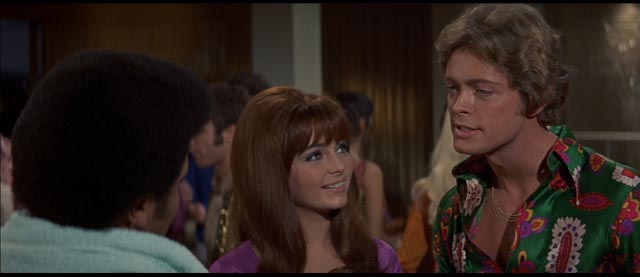
That same year, he made the first of his signature “rural gothic” movies, Lorna. Here he combined his obsession with sex involving well-endowed women with not only a narrative, but also a view of the world which, surprisingly, was quite dark, even tragic. On the surface, Meyer might appear to be an exploiter of women, but running through much of his work there’s a consistent theme of women’s oppression by a harsh, intolerant, male-dominated society. By the time of the near legendary exploitation classic Faster, Pussycat! Kill! Kill! (1965), this society is represented by emotionally stunted, violent men, explicitly overcompensating for their sexual impotence, yet finally being defeated by powerful, independent women.
But it’s not only the thematic content of his films that makes Meyer interesting; he was also technically accomplished. Frequently co-writing the scripts, he also photographed and edited his films; they are all well shot (unlike a lot of cheap exploitation movies) and his distinct editing style was heavily influenced by the New Wave, with rapid, at times jarring montage, making allusive connections between images in a way which reveals a genuine creative intelligence. This aspect of his craft was often overlooked by the few critics who bothered to take note of his films. In fact, he was frequently called incompetent, an accusation which can only be attributed to the way in which his style simply couldn’t be read by people expecting simple, straightforward exploitation.
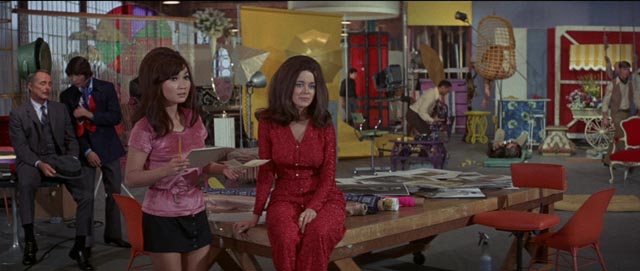
One critic who did appreciate what Meyer was doing was Roger Ebert, who early in his career as a film critic in Chicago connected with the director and found himself invited to Hollywood where Meyer had just been hired by 20th Century Fox, a studio struggling to stay afloat in a rapidly changing market it no longer understood. Left to their own devices, Ebert and Meyer dived into the assignment to make a “sequel” to Mark Robson’s successful adaptation of Jacqueline Susann’s trashy Hollywood melodrama Valley of the Dolls (1967).
When they were done, the studio didn’t really know what they had on their hands, and numerous critics didn’t really understand what they were seeing. In retrospect, it seems hilarious that so many reviewers ridiculed the movie for its “inadvertent comedy”. The only explanation is that they must have been expecting another reactionary cautionary tale like Robson’s film and thought Meyer had messed up, rather than seeing Beyond as a hilarious send-up of that very thing. Absurd from beginning to end, Meyer’s feature is a mockery of the po-faced Hollywood morality tale, those movies which revel in tawdry narratives in order to condemn the very things they’re exploiting – or rather to exploit the very thing they’re condemning.
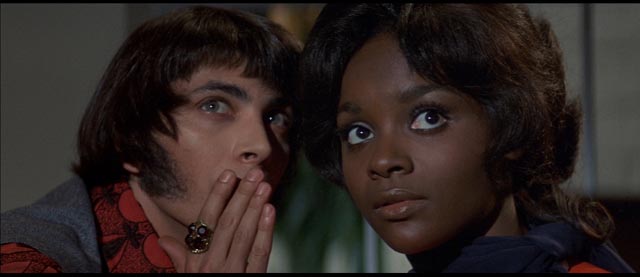
Rife with cliches played (as so much great comedy is) with a straight face, Beyond the Valley of the Dolls follows a girl band who head to the West Coast in search of fame, quickly rising to the top before imploding under the pressures of success and the rampant pathology of celebrity. Renamed the Carrie Nations by their “discoverer”, Z-Man Barzell (John LaZar), the trio get hooked on drugs, abandon their boyfriends, become involved in lesbian relationships, and only learn about the true value of life after an insanely overwrought, violent finale.
With performances as sincere as they are unconvincing and an event-packed narrative edited into a fast-moving frenzy by Meyer, the film finally works so well because, unlike so many studio movies of the time which tried to catch the up-to-the-minute flavour of youth culture, Beyond has a terrific score by Stu Phillips and William Loose and the songs performed by the Carrie Nations are authentic pop. This is one of the most convincing ersatz bands ever created for a movie. (They easily hold their own next to the Strawberry Alarm Clock, who make an appearance in the film.)
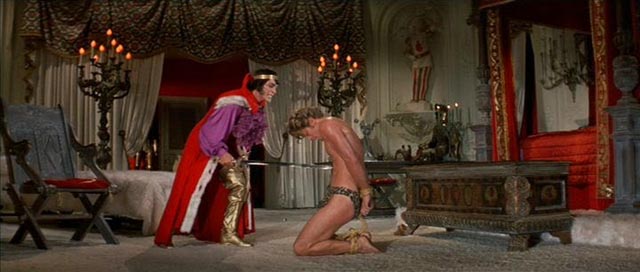
Stylishly shot by Fred Koenekamp, a studio stalwart who also shot Patton the same year, Beyond the Valley of the Dolls is a fever dream of celebrity, in many ways Meyer’s finest achievement – all the more remarkable for having been accomplished within the Hollywood studio system. It plays skillfully with the absurdities which the preceding Valley of the Dolls had tried to serve up straight; the audience gets to appreciate all the genre tropes, laughing along with the film’s makers rather than at them, while gleaning genuine pleasure from the very satisfying music, which is never played for parody (like, say, Spinal Tap). This has been a favourite since I first encountered it without preconceptions in a movie theatre in St. John’s, Newfoundland, in the summer of 1970.
Arrow Video’s Limited Edition Blu-ray offers an excellent, colourful transfer, a very strong mono soundtrack, and all the extras previously available on the Fox 2-disk DVD edition from 2006, including numerous featurettes and an amusing and enthusiastic Roger Ebert commentary, with a second commentary from various cast members. (Rather surprisingly, Criterion is bringing out essentially the same edition in September, along with Robson’s Valley of the Dolls.)
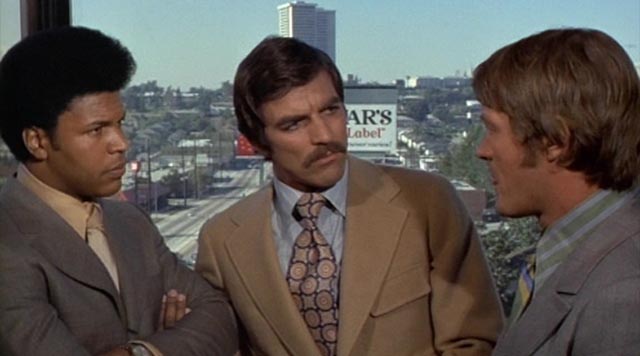
The big bonus here, though, is the first home video release of Meyer’s follow-up studio movie, The Seven Minutes (1971). Adapted from an Irving Wallace doorstop bestseller, this deals with a legal case brought against a publisher for the release of a supposedly pornographic novel (essentially fictionalizing the legal troubles surrounding books like Ulysses, Tropic of Cancer and Lady Chatterley’s Lover). The film bombed and got wretched reviews, and it’s true that it reveals Meyer’s weaknesses when it comes to trying to make a straightforward mainstream movie. It’s odd watching him try to breath life into endless minutes of back-and-forth courtroom dialogue.
The only times the movie comes close to his usual work is in the scenes involving the sleazy, hypocritical upstanding citizens (moneymen and politicians) who use the case as a means of furthering their own social and political agendas; these are the most cartoonish element of the film, played with an enthusiasm lacking elsewhere. As if to compensate for the turgid and generally static narrative, Meyer cuts every scene into a rapid-fire spray of visual fragments which feel like a slap in the face of Hollywood’s traditional “invisible” technique designed to hide audience manipulation beneath an apparently seamless flow of events.
But it is interesting watching the likes of Philip Carey, Jay C. Flippen, Lyle Bettger, Charles Drake, John Carradine, Harold J. Stone and Tom Selleck in the unconventional hands of Russ Meyer, with none other than Yvonne De Carlo turning up as the surprise witness in the final stretch, playing her role as the now ageing author of the steamy novel completely straight.
This second feature is in standard definition on a supplementary DVD disk, but the image quality is reasonably good.
*
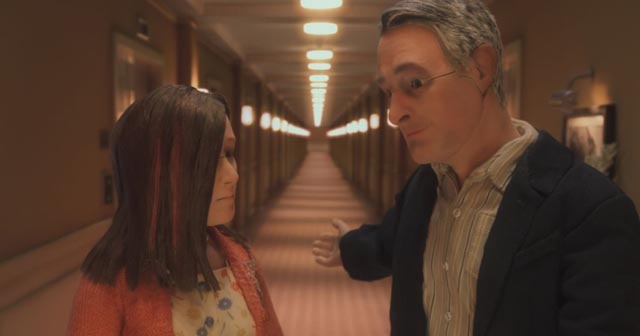
It’s a truism that indirection and suggestion are more erotic than the explicit visualization of sex. Unlike the depiction of almost any other human activity, sex generally stops narrative dead in its tracks and renders character redundant. By leaving its depiction indirect, the viewer is able to fill in details while remaining within the flow of the story and engaging with issues of psychology and emotion; by depicting it explicitly, a movie triggers our innate voyeuristic tendencies. For the duration of the scene, we react atavistically to the spectacle, not emotionally with the story and characters. This is a reflection of the visceral place sex and sexuality holds in our experience. It’s very difficult not to be aware of the actors and what they’re doing, rather than of the characters. A narrative-damaging corollary of this is the fact that there’s a kind of generic monotony to the sexual act; it’s rare that a filmmaker can create a sex scene with the kind of multiple layers that enrich drama. Nicholas Roeg managed to a degree in Don’t Look Now by intercutting the lovemaking of John and Laura, a married couple trying to overcome a life-shattering trauma, with their post-coital activity (showering, dressing, preparing to leave their hotel room); this adds a poignant sense of ephemerality to the emotional and physical immediacy of their love-making.
This kind of thing is not what Meyer was aiming for in his work, where the voyeuristic spectacle was the essence of the thing, the visual attraction on which he hung his often rather jaundiced view of human behaviour. The depth and detail of that surrounding material is what raises his work above the banal level of pornography. What is most difficult is to fully integrate the display of sexual activity into the narrative, to make it an integral part rather than an interlude or interruption.
A rare instance of this being achieved successfully can be seen in Charlie Kaufman’s remarkable new feature, Anomalisa (2015).
*
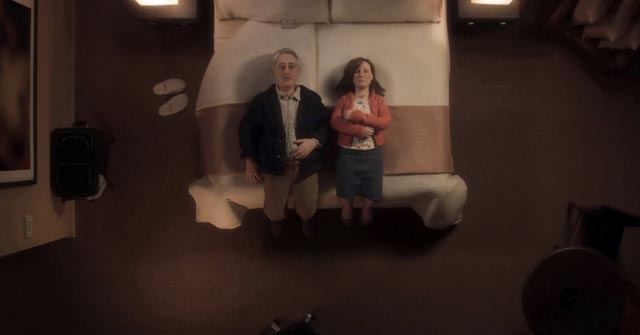
Anomalisa (Charlie Kaufman & Duke Johnson, 2015)
Based on an audio performance piece written by Kaufman, Anomalisa deals with the experiences of Michael Stone (David Thewlis), a customer service guru who checks into a large hotel in Cincinnati where he’s scheduled to deliver the keynote address at a conference. Over the period of two days he reconnects with an old girlfriend whom he abandoned years ago; meets two women attending the conference, who have both read his book and express awe at meeting him in person; goes for drinks with them and finally invites one of them, Lisa Hesselman (Jennifer Jason Leigh), back to his room for a nightcap. This encounter is awkward and tentative, a shy and fumbling attempt by two alienated people to make some kind of emotional contact. Kaufman and co-director Duke Johnson manage to create one of the most natural, sensitive and poignant sex scenes I’ve ever come across.
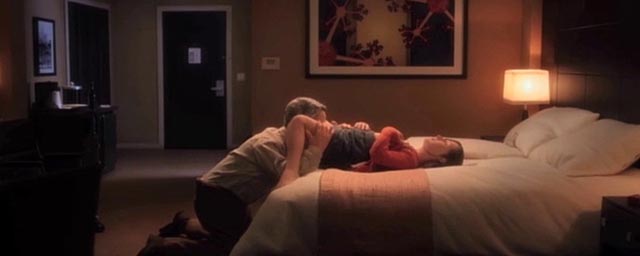
And, strangely, it works on multiple levels because it’s played through exquisitely accomplished stop-motion animation. The filmmakers use the puppets to create sufficient distance to avoid triggering the viewer’s natural voyeuristic impulse, yet the design of the puppets and the remarkably nuanced animation engage our empathy, allowing us to experience the scene through the characters’ own damaged emotions. Here, rather than pushing us out of the narrative moment, the sex scene draws us into Michael and Lisa’s characters on a quite profound level which reflects Kaufman’s characteristic blend of humour and despair.
Charlie Kaufman, after almost a decade of television writing, made a remarkable big screen debut in 1999, collaborating with director Spike Jonze on the all-but-unclassifiable Being John Malkovich, another film about the essential difficulty people have connecting with each other emotionally. In the nine years after that unexpected hit, he wrote two films for Michel Gondry, one more for Jonze, and another for George Clooney, before taking on the role of director in 2008 with the monumental Synecdoche, New York, his epic contemplation of creativity and the obsession bordering on madness which underlies it (the closest a movie has ever come to capturing the feel of a David Foster Wallace novel). That film elicited widely varied reactions from critics and audiences and was not financially successful – which meant that Kaufman had difficulty finding backing for subsequent projects. He did make a TV movie for FX in 2014 (How and Why), but for his second feature he had to go the KickStarter route because the project seemed in every way uncommercial.

Anomalisa was originally performed by actors sitting on a stage with musicians and Foley artists – essentially like an old-time radio play. The script called for three actors, two playing Michael and Lisa, the other (Tom Noonan in both the stage and film versions) playing all the supporting parts, male and female. This is more than a mere gimmick as Michael’s state of psychological disengagement makes it impossible for him to differentiate among the people he encounters (even his wife and young son and his former lover), all of whom have essentially the same features.
That is until he meets Lisa, who has some facial scarring; because of this, she is the only one who stands out for him as an individual and he immediately tries to cling to her. It’s not a matter of seduction so much as the desperate desire of a man drifting helplessly to grasp an emotional life raft.
As the evening progresses, the two of them end up in his hotel room. While sex and sexuality are a matter of voyeurism and power in Meyer’s work, here they are something sadder and more frightening. Vulnerable and lonely, Michael and Lisa find a transient emotional connection in one of the most touching sex scenes ever put on film. There is great beauty and tenderness in these two awkward souls, so self-conscious about their physicality, overcoming their fears in order to find in each other a brief moment of affirmation.
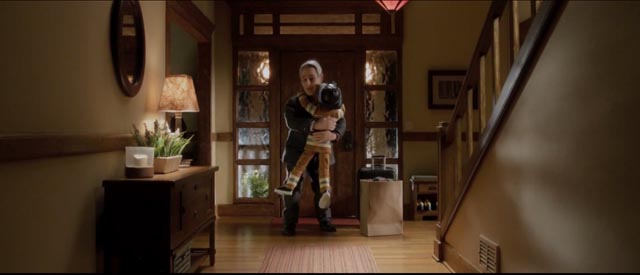
Paradoxically, while making no attempt to disguise the fact that these characters are puppets, Kaufman, Johnson and their team of animators instill a remarkable degree of life into them, giving them more human presence than many flesh and blood actors are capable of achieving. This is the polar opposite of the parodic puppet sex of Team America, giving the viewer privileged access to emotional and psychological depths rarely touched on in movies.
Anomalisa is not only a stunning technical achievement, a landmark in the art of animation; it is also one of the most moving films to appear in a long time.
Comments